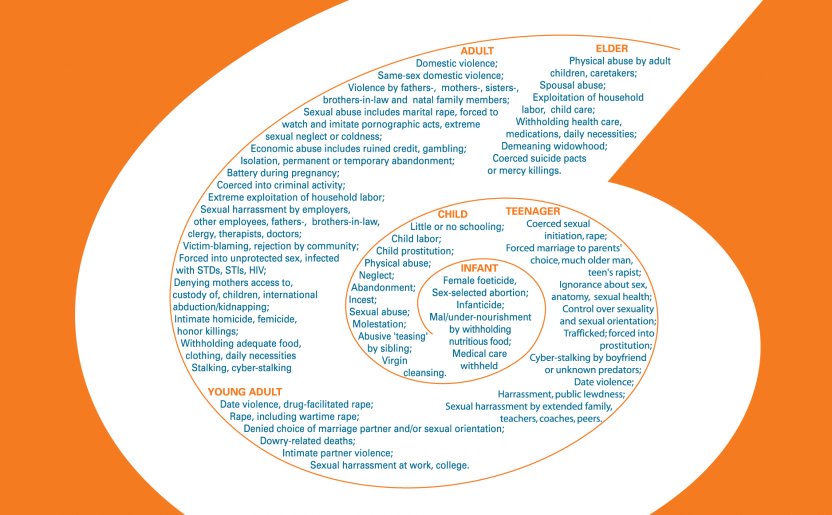The Lifetime Spiral reveals patterns of victimization by enumerating the types of violence, vulnerabilities, and harms women and girls face. It also implicitly shows the presence of different abusers located over the lifecourse. A grandmother may withhold nutritious food for a baby girl, a brother may perpetrate incest, a priest may molest a teen girl, a father may insist on a forced marriage, a college student may date rape a classmate, a co-worker may engage in sexual harassment, a husband may batter during pregnancy, a brother- or sister-in-law may stalk, a family may silence or shame, a community may ostracize homosexuals, an ex-boyfriend may kill.
In addition to physical, sexual, economic and emotional abuses; violence is about living in a climate of fear, shame, coercive control, and devaluation. It is often experienced in the context of additional oppressions based on race, ethnicity, age, sexual orientation, gender identity, type of labor performed, level of education, class position, disability, and immigration or refugee status. Raising awareness about the historical nature of gender violence confronts victim-blaming, informs advocacy, and empowers survivors.
Related Resources
AANHPI Elder Safety and Wellness Case Studies
In partnership with the National Health Resource Center on DV, Futures Without Violence, API-GBV released this set of five case scenarios. Each case scenario includes reflection questions and discussion points on how to support an elder and their family, and they...
Differing Dynamics of Domestic Violence in Asian Families: Implications for Child Custody Mediation, 2009
This tipsheet discusses the particular patterns, forms and dynamics of abuse of domestic violence in Asian communities.
API-GBV
*We are hoping to have the Lifetime Spiral of Violence translations reviewed by advocates. If you see any errors or issues in the translations, please contact sluo@api-gbv.org.

